Abstract
Numerous strains of P. vivax, distinguishable chiefly by their biological characteristics, are known to exist. Two main varieties are recognized: the so-called temperate and tropical strains. The most extreme example of the former—designated by Nikolaev as P. vivax hibernans—constantly exhibited an extremely long incubation period. The strain is no longer in existence and no type material has been preserved. In its place, a North Korean strain with a generally long incubation period has been studied and compared with the well-known tropical Madagascar strain, which frequently but not constantly has a short incubation period. The data presented here concern the behaviour of various strains from the USSR and the morphological characteristics of the North Korean and Madagascar strains. Splenectomized chimpanzees were used as the host of these parasites, particularly in regard to exoerythrocytic schizogony. Attempts were also made, by late biopsies of the liver of the apes, to elucidate the prolonged latency of the North Korean strain. Although there was no evidence of specifically dormant forms, it is probable that certain sporozoites fail to develop in the normal time and that they are reactivated by an unknown factor a year or more after inoculation.
Full text
PDF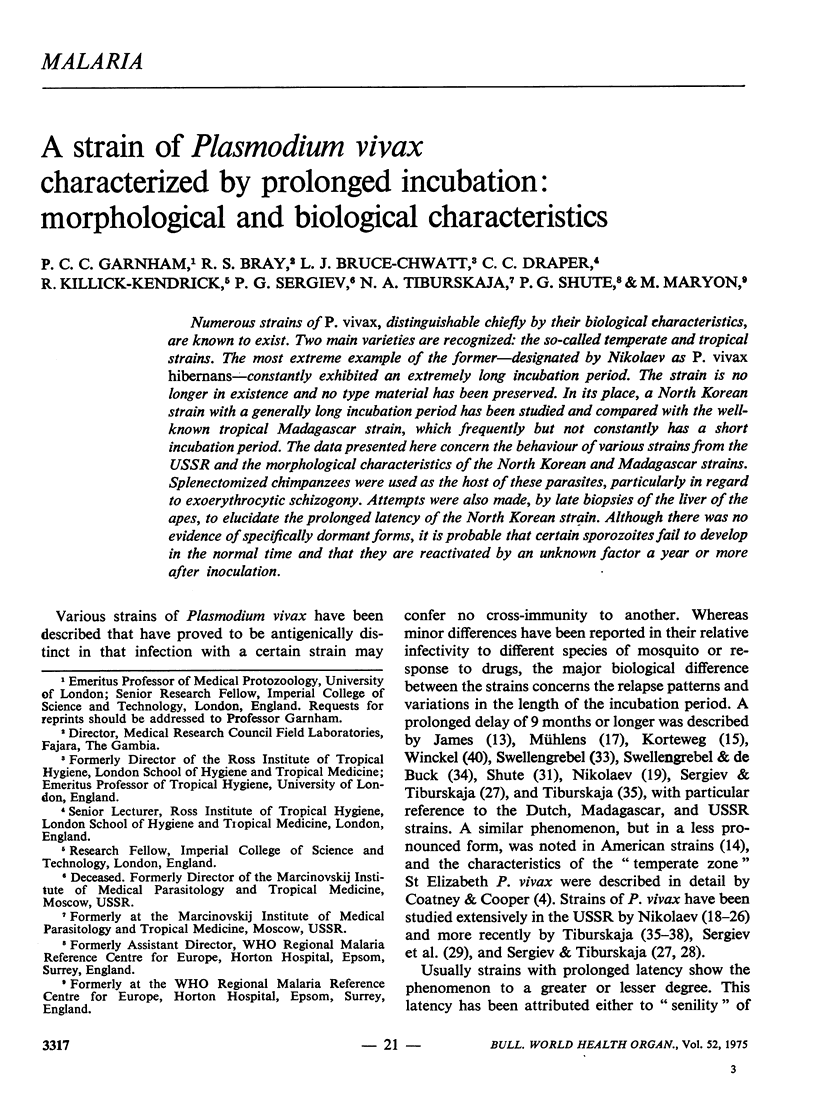
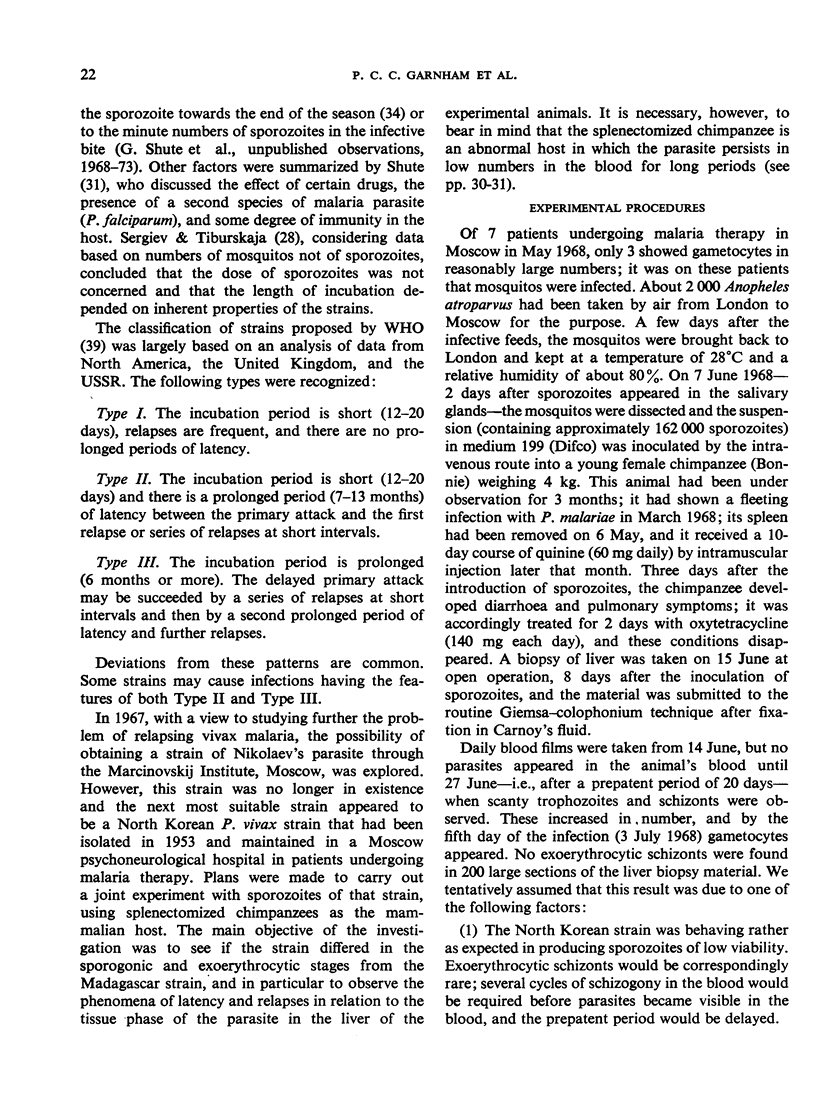
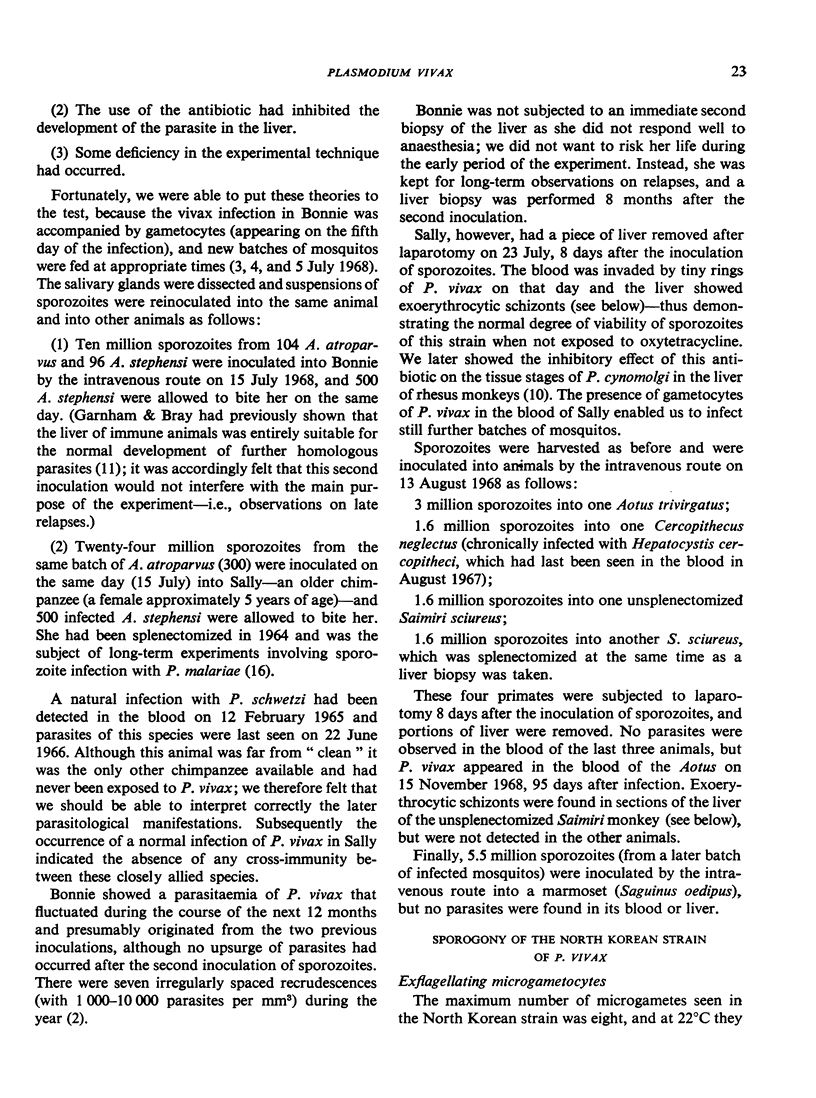
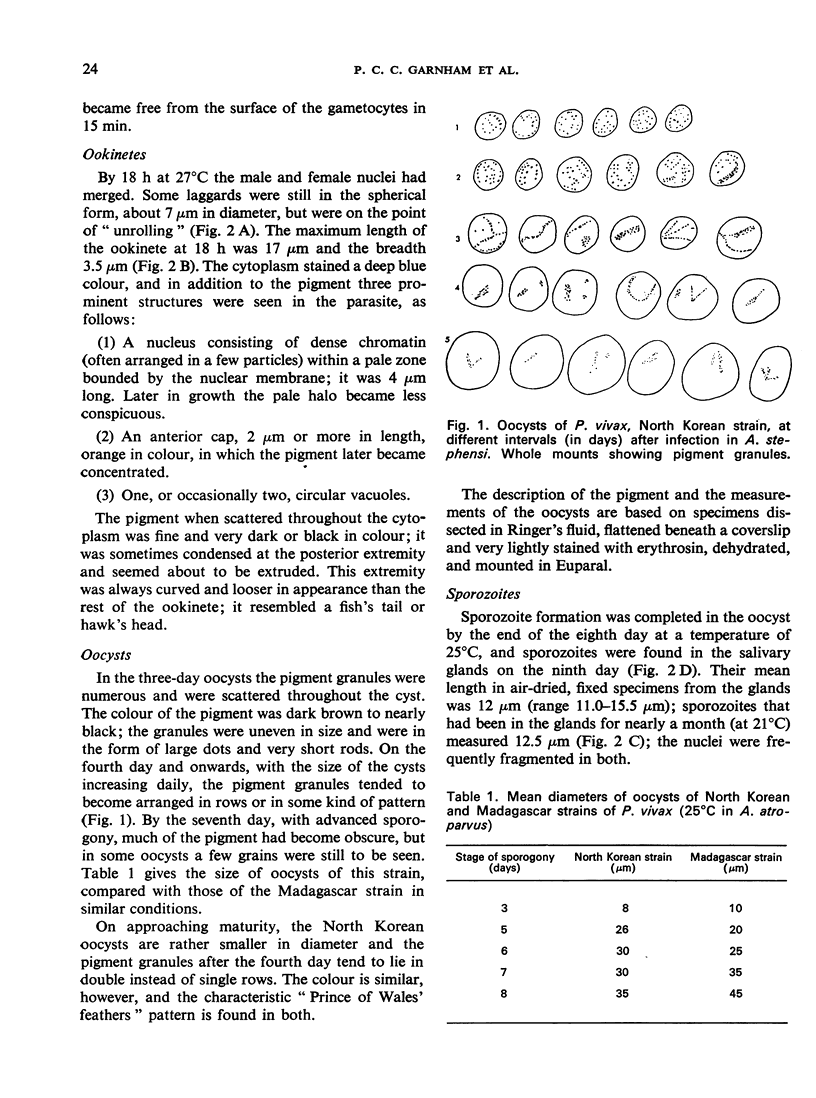
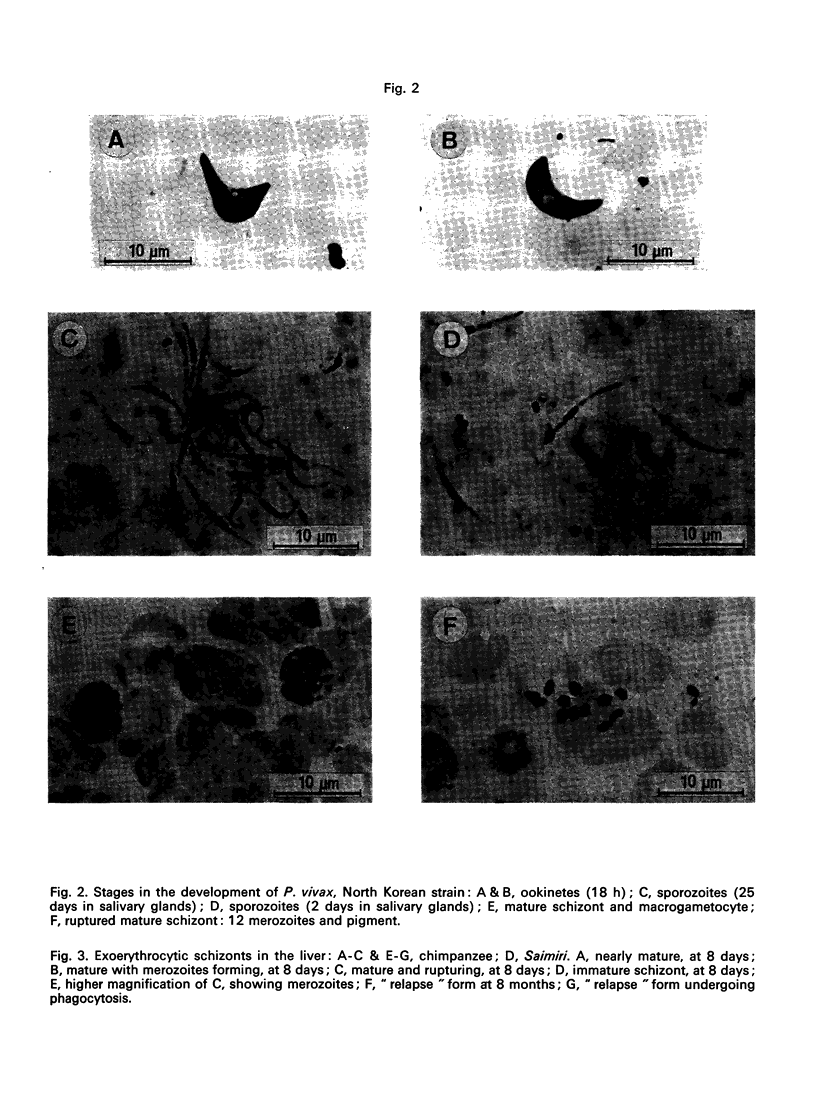

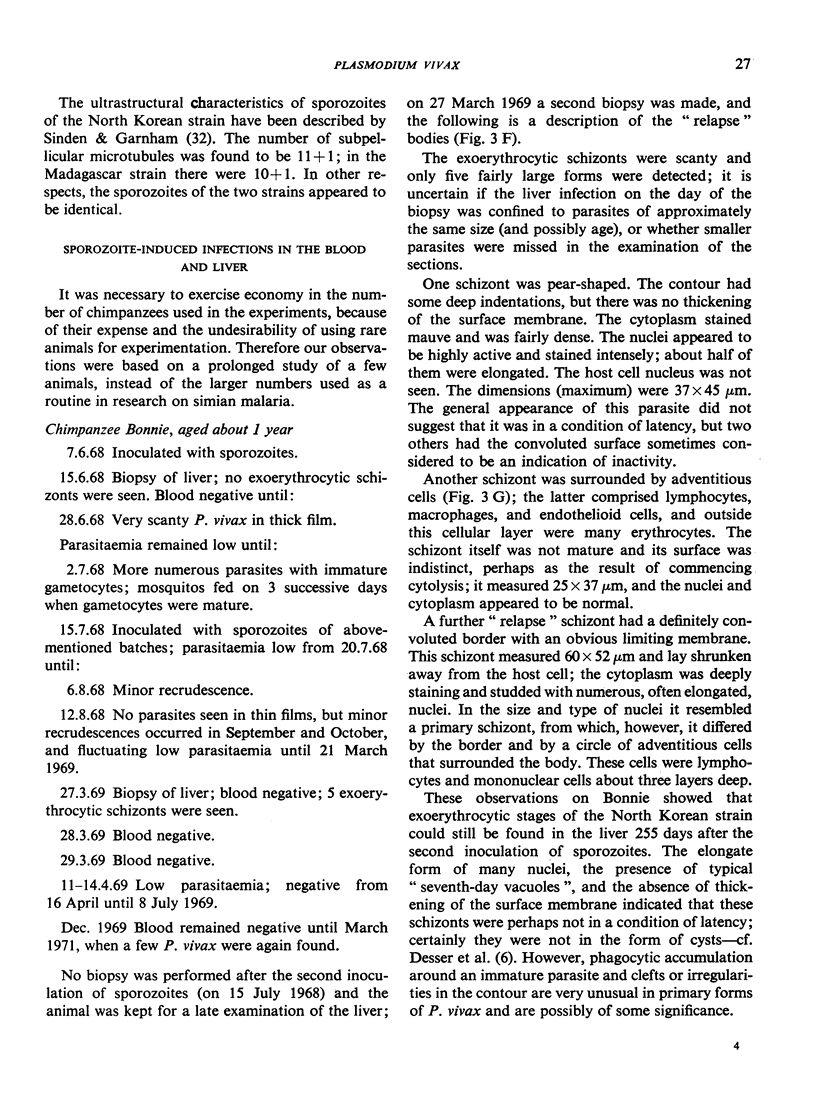
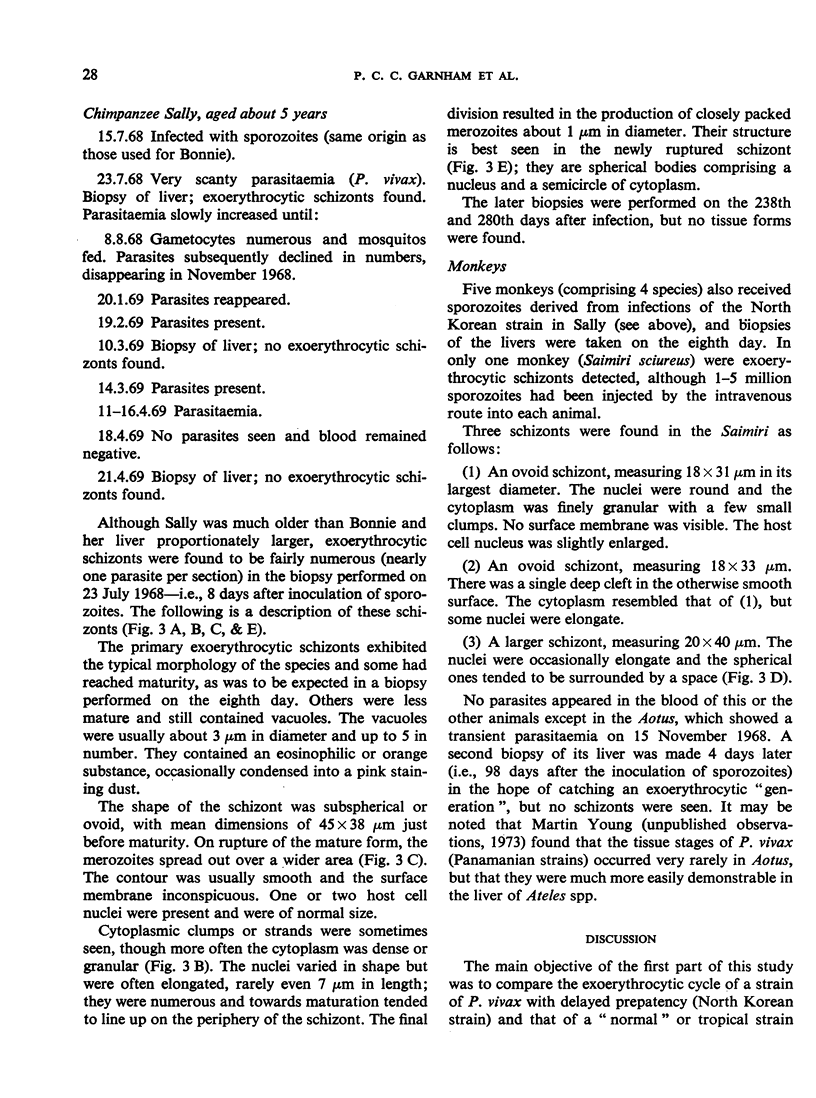
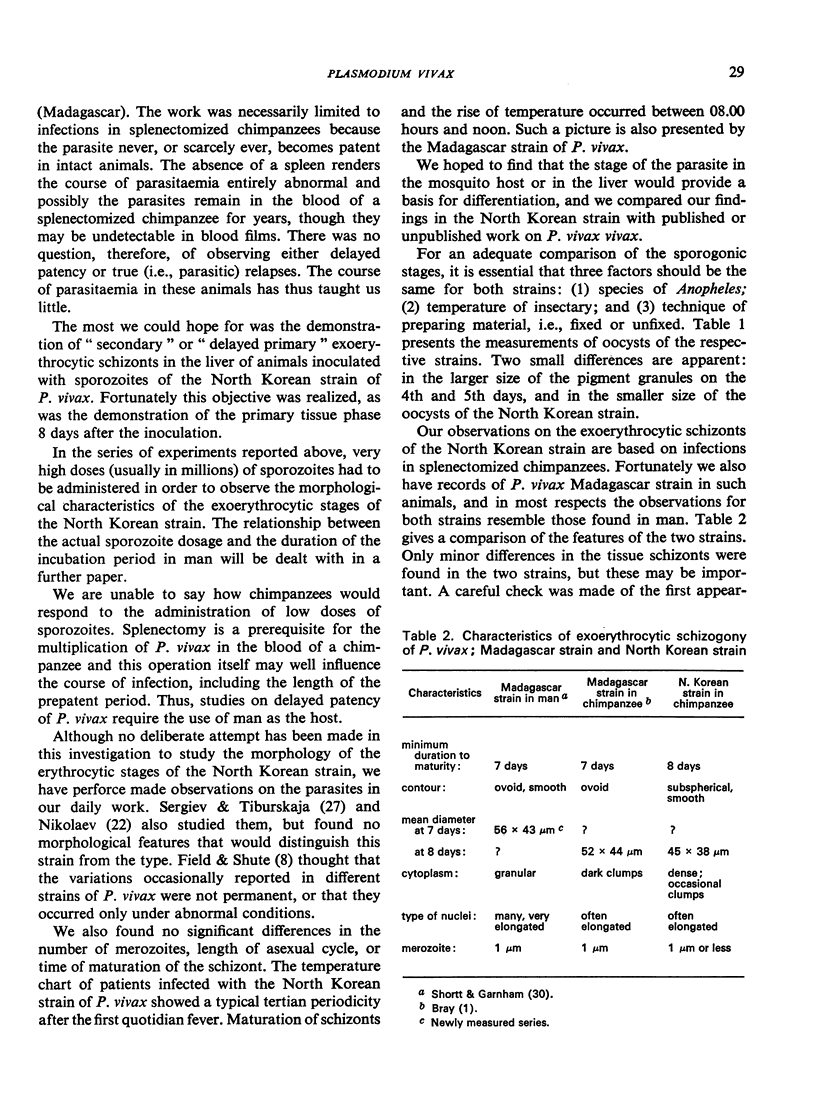
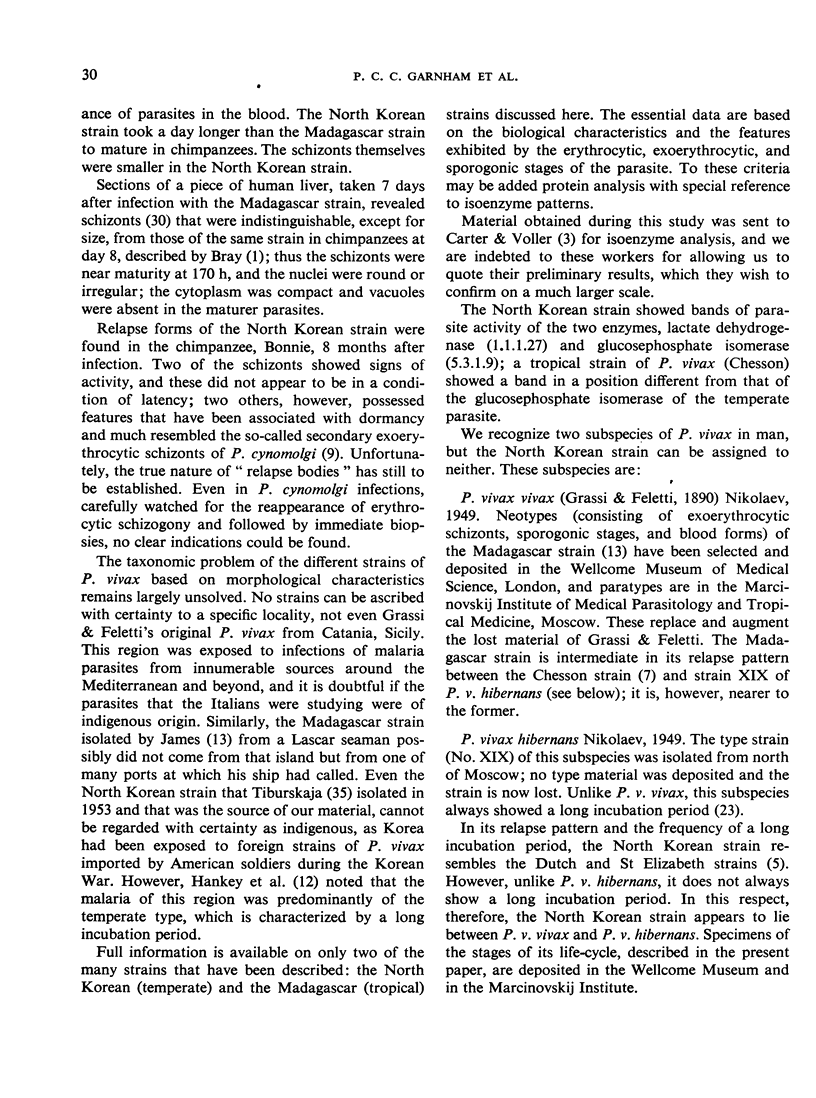
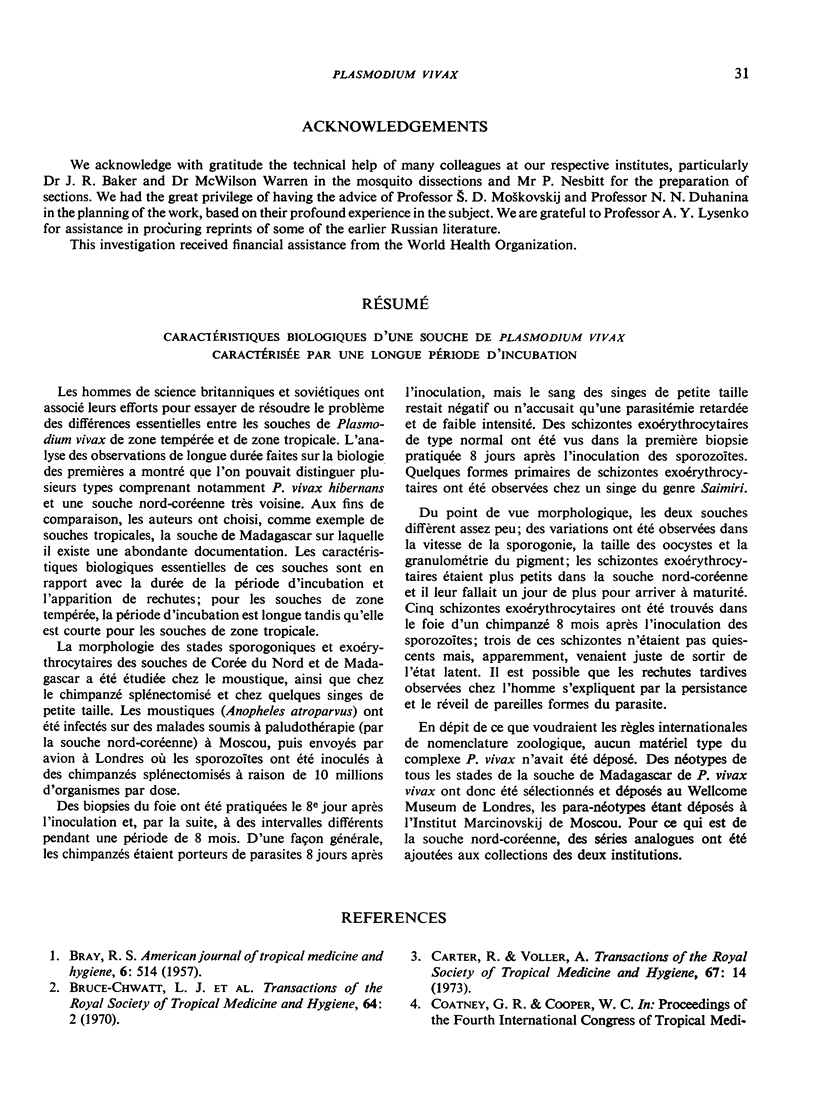
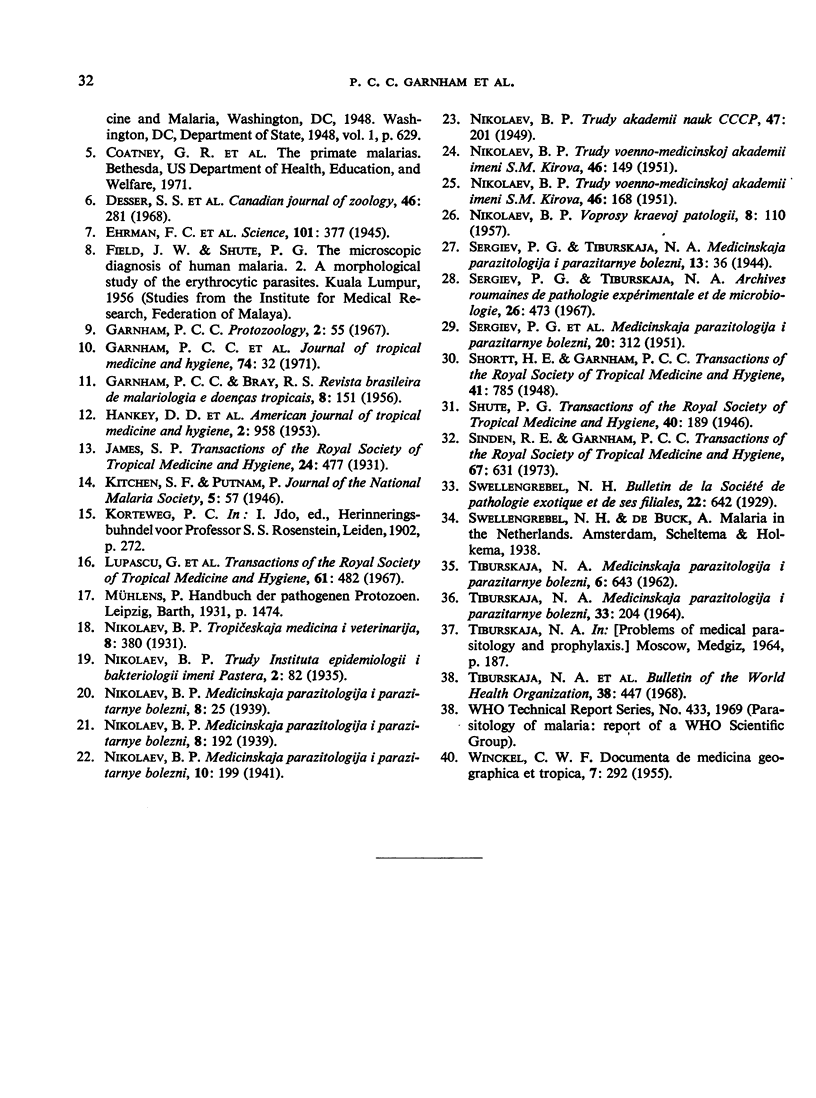
Images in this article
Selected References
These references are in PubMed. This may not be the complete list of references from this article.
- Ehrman F. C., Ellis J. M., Young M. D. PLASMODIUM VIVAX CHESSON STRAIN. Science. 1945 Apr 13;101(2624):377–377. doi: 10.1126/science.101.2624.377. [DOI] [PubMed] [Google Scholar]
- GARNHAM P. C., BRAY R. S. The influence of immunity upon the stages (including late exo-erythrocytic schizonts) of mammalian malaria parastes. Rev Bras Malariol Doencas Trop. 1956 Jan;8(1):151–160. [PubMed] [Google Scholar]
- Tiburskaja N. A., Sergiev P. G., Vrublevskaja O. S. Dates of onset of relapses and the duration of infection in induced tertian malaria with short and long incubation periods. Bull World Health Organ. 1968;38(3):447–457. [PMC free article] [PubMed] [Google Scholar]




